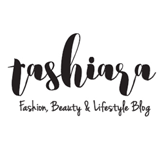Kojic acid soap – Everything you need to know before using It

1. How long should I leave kojic acid soap on my skin to avoid irritation, and is it safe for daily use?
Kojic acid soap is a potent brightening agent, and while it’s effective, it should be used with care. When starting, leave the soap on your skin for only 15–30 seconds before rinsing thoroughly. This helps minimise irritation, especially for sensitive skin. Over time, as your skin builds tolerance, you can increase this to up to 2 minutes, but never more than that.
As for daily use, it's generally safe once per day, ideally in your evening routine. If your skin becomes dry or irritated, reduce the frequency to 3–4 times a week and always follow up with a moisturiser and sunscreen during the day.
2. Can I use kojic acid soap on my face and body, or should I limit it to darker areas like underarms and knees?
You can use kojic acid soap on both the face and body, but the key is how your skin reacts. Many users apply it to areas with hyperpigmentation, such as underarms, knees, elbows, and inner thighs, but it’s also suitable for facial use if done cautiously.
For the face, opt for a milder kojic formulation and test on a small area first. Avoid the eye and lip area. For the body, you can target dark spots or use it as a general brightening wash, as long as you moisturise well afterwards.
3. Is kojic acid soap safe to use with other skincare products like vitamin C or glycolic acid serums?
Kojic acid can be safely combined with other actives, but layering too many exfoliants or acids at once can increase sensitivity. If you're using serums with vitamin C, glycolic acid, or retinol, avoid using kojic acid soap in the same routine.
Instead, use kojic acid soap in the evening, and apply your actives on alternate nights. Always listen to your skin, redness, peeling, or stinging means it’s time to scale back.
4. Which kojic acid soap brand is most effective for fading hyperpigmentation without causing dryness?
Effectiveness often depends on formulation and supporting ingredients. A high-quality kojic acid soap should contain moisturising agents like glycerine, coconut oil, or aloe vera to counter dryness.
Satthwa Kojic Acid Soap is a great option. It combines Kojic D (a more stable version of kojic acid) with Vitamin C, Licorice Extract, Aloe Vera, and a transparent coconut oil–based soap base, making it both effective and gentle. It’s especially helpful for those with sensitive skin prone to dryness.
5. Does kojic acid soap actually work for acne scars and dark spots, or are serums and creams better options?
Kojic acid soap can be effective in fading mild acne scars, post-inflammatory hyperpigmentation, and dark spots, especially when used consistently. However, soaps only stay on the skin briefly, limiting how deeply the active ingredients penetrate.
For deeper pigmentation or faster results, serums and creams with kojic acid, alpha arbutin, or niacinamide may work better. That said, kojic acid soap can be an excellent first step in your brightening routine, especially when paired with moisturisers or serums that complement its action.
Conclusion:
Kojic acid soap is a promising addition to your skincare if used wisely. Start slowly, monitor your skin’s response, and always protect your skin with SPF. Whether you’re dealing with dark spots, uneven skin tone, or underarm darkness, kojic acid soap—especially ones like Satthwa Kojic Acid Soap can be an affordable and effective choice.








